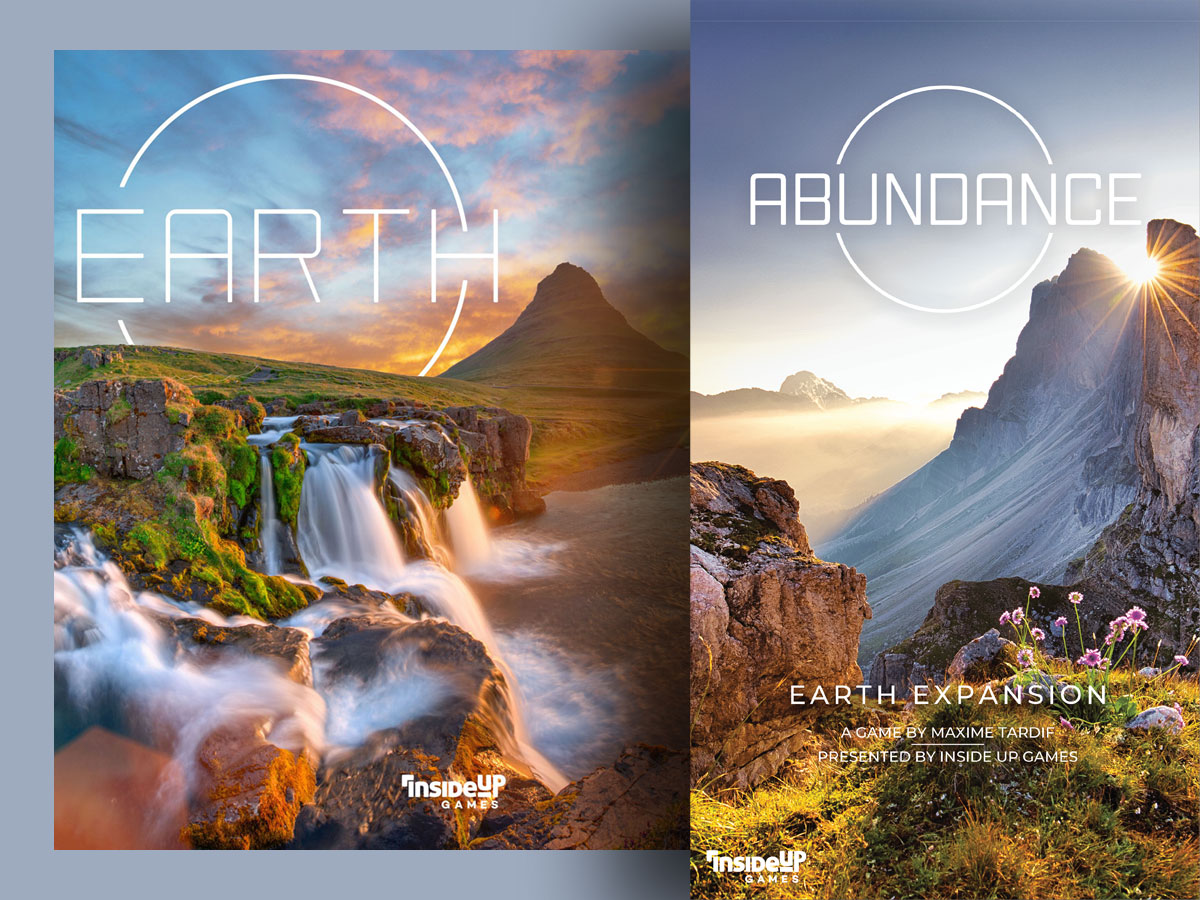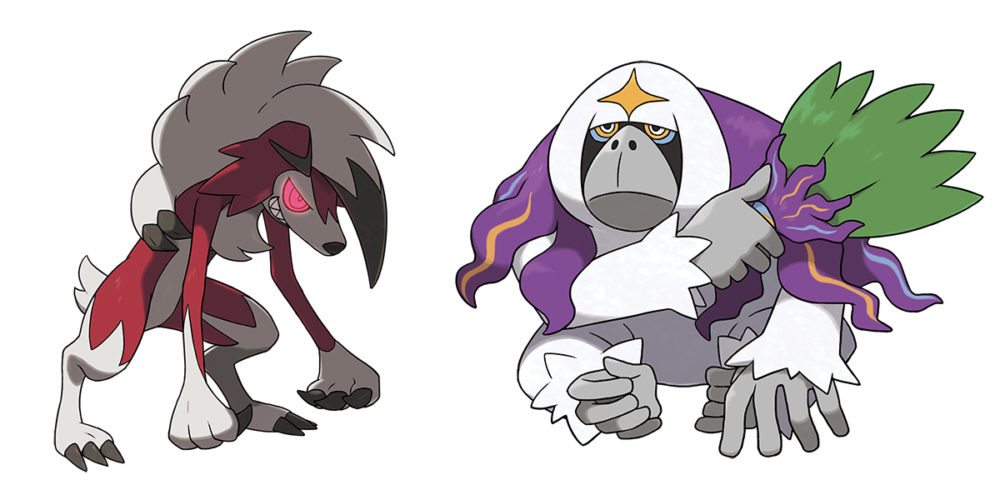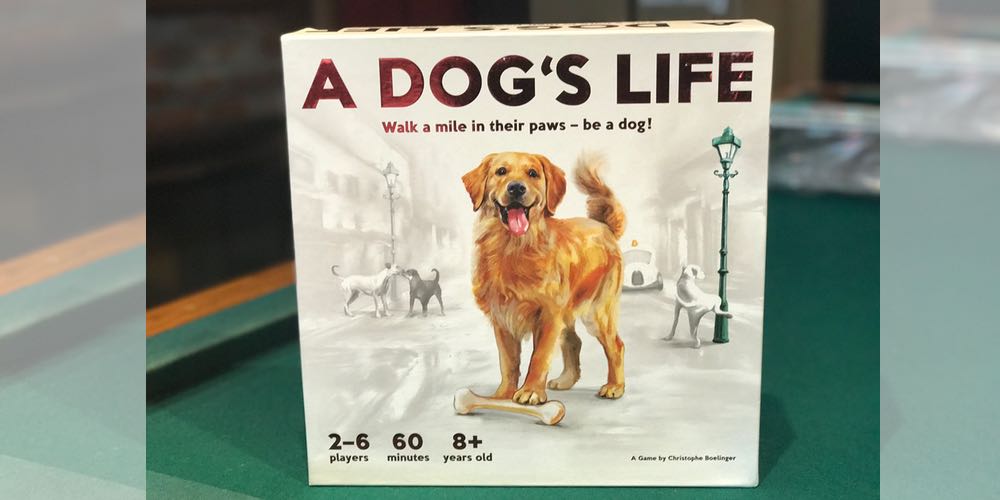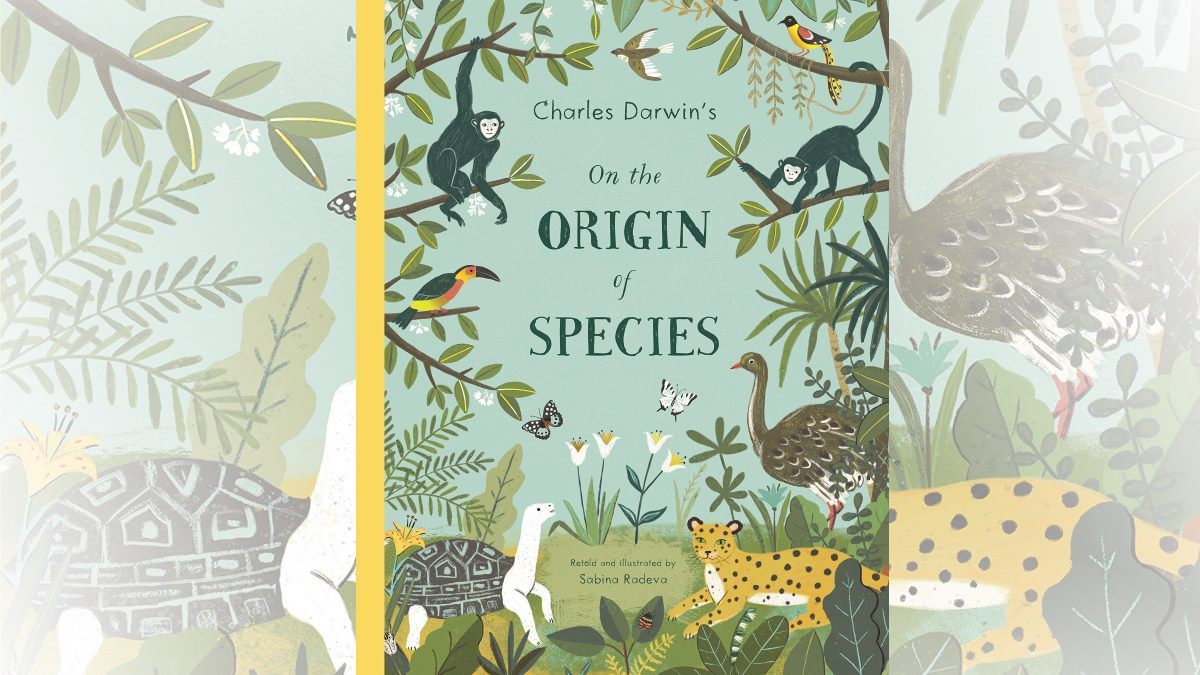Expand your ecosystems with even more options and a powerful new action.
What Is Earth: Abundance?
Earth: Abundance is an expansion to Earth and requires the base game to play. Earth: Abundance is for 1 to 6 players, ages 14 and up, and takes about 45 to 90 minutes to play. It’s currently seeking funding on Kickstarter, with a pledge of $39CAD (about $29USD) for the expansion, and additional tiers for those who want to get the base game or other add-ons like the fancy recycled-plastic sprouts and trees. As with the base game, I think the game has enough complexity that 14 and up seems like a good range, but a younger kid with some solid game experience and strong math skills may still be able to enjoy it.
Earth: Abundance was designed by Maxime Tardif and published by Inside Up Games.
New to Kickstarter? Check out our crowdfunding primer.

Earth: Abundance Components
Note: My review is based on a prototype copy, so it is subject to change and may not reflect final component quality. (The prototype cards do not have flavor text on them yet and are marked as prototypes.)
Here’s what comes in the box:
- 6th Player board
- 5 Board Overlays
- 5 Leaf tokens (pink, for 6th player)
- 11VP token
- 30 Seed tokens
- 20 Trunks
- 16 Canopies
- 46 Soil tokens
- 50 Sprouts
- 80 Cards:
- 2 Islands
- 2 Climates
- 3 Fauna
- 3 Ecosystems
- 70 Earth cards (Flora, Terrain, and Event)
- Score pad
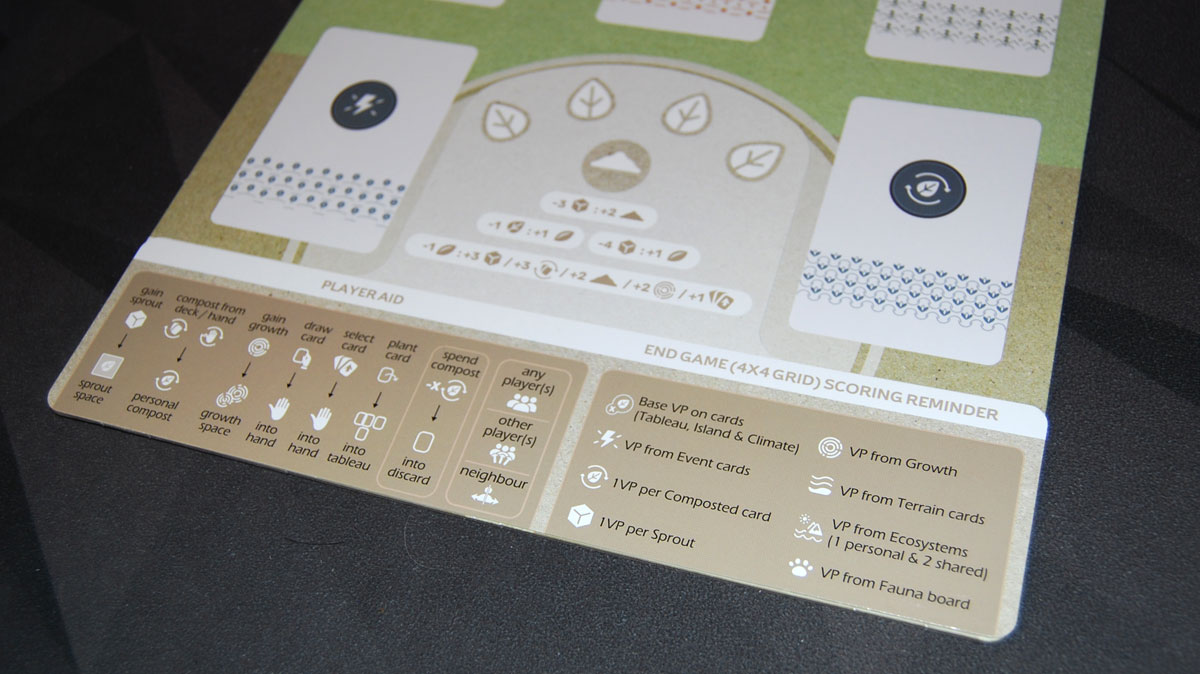
The components are mostly the same as those in the Earth base game—it adds enough components for a 6th player, so there are just more of all those tokens. The one big change is the player board—the 6th player board folds in half (to fit in the smaller expansion box) and has some differences in the reference section of the board corresponding to new card effects and actions. The board overlays are for the original boards, and fit on top of them to update them for the expansion. (It’s probably not recommended to attempt the base game with 6 players—you need to use the full expansion.)

The other new component is the seed tokens—these are just small cardboard tokens that look like seeds. (They were purple in the prototype but they may be more of an earth tone in the finished game.)
There’s a big stack of new cards that get shuffled into the rest of the supply—these do have some new effects and icons on them, but there aren’t any totally new types of cards.
Kickstarter backers will also be able to get some deluxe wooden tokens that replace some of the cardboard tokens—seeds, leaf tokens, soil, and so on.
How to Play Earth: Abundance
For the primary gameplay, see my original review of Earth here. I’ll just explain some of the new differences.

Setup
After adding the new cards into their respective decks and all of the additional components to the supply, the rest of the setup is pretty similar. In addition, make sure everyone has the board overlay (or the new player board), and give each player 1 seed. Cover the 7VP spot on the fauna board with the 11VP token—the bonus for finishing your tableau has been increased.
New Gameplay
The big new change in gameplay is the seeds. You can gain new seeds at any time by spending 4 sprouts or 1 leaf token—but note that if you spend your leaf tokens, you will have fewer left to use for scoring on the fauna board.
Seeds may be traded to the supply at any time for other resources:
- 3 Sprouts
- 3 Compost from the deck
- 4 Compost from your hand
- 2 Soil
- 2 Growth
Or, you may spend a seed at any time for the new Germinate action. You choose one standard scoring objective, things like “a card that costs 3 or less soil” or “flora with 6 sprout spaces,” and you get to search through the deck for a card that matches that objective. You must show everyone the cards you’re checking, and take the first card that matches your stated objective into your hand. The rest of the cards are discarded.

There are some new card abilities that affect or interact with other players: some cards give you a bonus and everyone else a different bonus. Some abilities let the owner choose a player to gain something. Finally, there are cards that will depend on the contents of one of your neighbor’s tableaus.
The one other rules change is that sprouts can now be saved in your supply: in the base game, if you gained sprouts but didn’t have spaces for them, they were forfeited. Now, you can just put them in your reserve and add them to your plants at the end of any future turn. Sprouts in your reserve won’t be worth points at the end of the game, but if you can get them placed before the game ends, you’ll still score for them. Also, while they’re on your board, you can’t spend them for soil or seeds—you’ll need to place them on cards first, and then trade them in.
Why You Should Play Earth: Abundance
One of the big challenges for a game like Earth with so many cards—283 in the base game!—is that it can sometimes be difficult to get your combos to pay off. Maybe you have a terrain card that gives you points for every mushroom you put next to it … but then you can’t find any mushrooms! I do like that the cards tell you the percentage of mushrooms in the deck (19%) but sometimes the odds just aren’t in your favor.
The new germinate action is just what you need for making your own luck: now, you just spend a seed, state that you’re looking for a mushroom, and you’re guaranteed to get one (assuming there are any left in the deck). Of course, there’s no guarantee that you’ll get the best mushroom for your tableau, but it’s better than not being able to find one at all. Using seeds to germinate is a real game-changer: it can help you max out ecosystem scores, race to complete fauna requirements, or take a chance on terrains that require less-common cards.
You can use seeds in other ways—cash them in for a much-needed resource—but when I played I really tried to save them up for germinating whenever possible, simply because it’s such a powerful action. And since you can do this at any time, you could even germinate right before it’s time to plant to give you a better option than what you have in your hand.
You do have to decide when it’s worth buying a seed: 4 sprouts is 4 points, after all, and a leaf token is an opportunity to score as much as 15 points on a fauna card. But if you know you can’t complete one of the fauna cards, or you’re already sure you won’t be the one to complete your tableau first, then you do have an extra leaf token that you might as well cash in for a card that you actually need. (I found that building a tableau around earning extra sprouts can be a good way to save up for buying more seeds, though time will tell if that strategy always works.)

The new card abilities are a smaller tweak that add just a touch more player interaction. You still don’t mess with anyone’s tableaus, but some of them are like a mini “action/follow” sequence, where you get a bigger bonus but it gives everyone a smaller benefit. The cards that check your neighbor’s tableau create a little more interdependence as well: if you know your neighbor will get an extra sprout for every herb you plant, maybe you’ll want to lean more heavily into trees instead. Conversely, if you see that your neighbor is going to score for having more herbs, maybe some bonus based on their herbs is a great investment for you!
Earth: Abundance still feels a lot like playing Earth, but is aptly named: there’s just a little more of everything, and the seeds give you the ability to find the things you need to fill out your tableau. I’ve been enjoying it so far and look forward to trying out new tactics—I’ve only seen a fraction of the new cards so far. And since it doesn’t change the rules too much, I think it’s one that I’ll likely just keep mixed in with the base game in the future, rather than having to teach the base game separately before introducing the expansion.
For more information or to make a pledge, visit the Earth: Abundance Kickstarter page!
Click here to see all our tabletop game reviews.
![]() To subscribe to GeekDad’s tabletop gaming coverage, please copy this link and add it to your RSS reader.
To subscribe to GeekDad’s tabletop gaming coverage, please copy this link and add it to your RSS reader.
Disclosure: GeekDad received a prototype of this game for review purposes.
